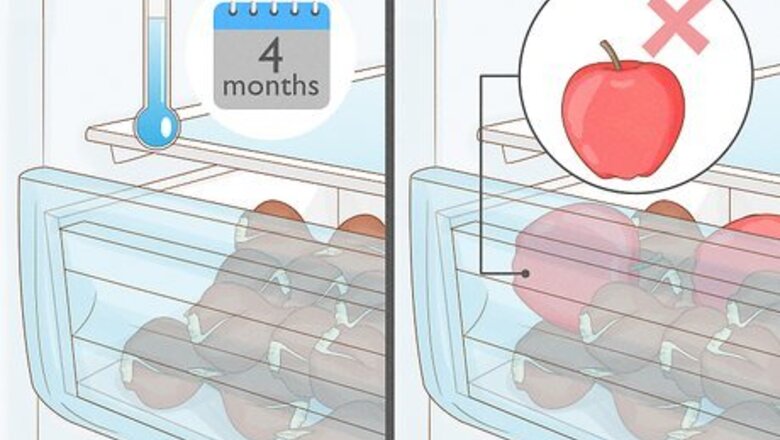
views
Prepping Bulbs For Forcing

Trick the bulbs using a cold environment to make them flower. Bulbs need to be ‘tricked’ into believing they have survived winter in order to start flowering. This means they need to experience a sustained cold environment whilst they are dormant. The ones you buy commercially are likely to have been chilled for you. If you are supplying your own bulbs, you’ll need to recreate this cold environment yourself. You can place the bulbs in a fridge salad drawer, but keep them well away from fruit, especially apples, because they emit gases that will inhibit the bulbs’ later flowering. You can also try using a cool cellar if you can achieve an ideal temperature of between 30 and 50 F. Your bulbs need to stay at this cool temperature for around 4 months.
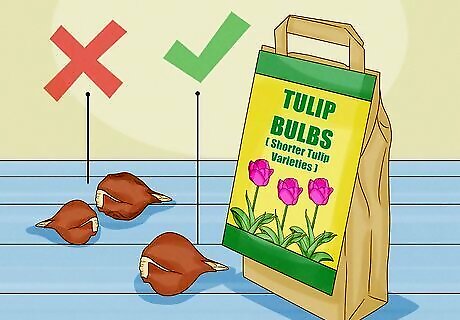
Pick large, firm bulbs of short tulip varieties to have the best chance of flowering. Not all commercially purchased tulips will stand forcing. Check the label when you are shopping for bulbs. As a general rule, shorter tulip varieties tend to do better than taller varieties when forced. The essential thing is to select good healthy bulbs that are large and firm. Reject any bulbs that seem rather small or are soft or mushy.
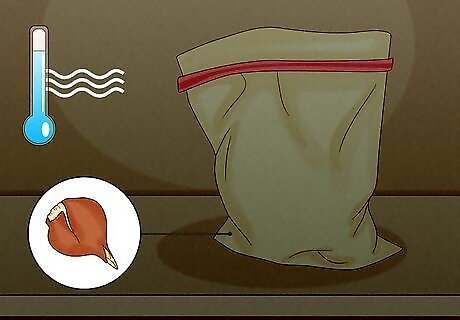
Store bulbs in a cool, dry, dark place after the chilling process. After chilling or purchase, store your bulbs in a cool dry and dark place until you are ready to force them. You don’t want your bulbs to dry out completely, so keep them out of drafts. Inside a paper bag in a cool cupboard is ideal.

Choose a properly-sized vase. You don’t always have to get a specially designed vase to force tulips. The most important thing to remember is that the bulb should not touch the water, otherwise it will rot. The bulb does need to sit right above the water though, so the roots can grow down into it. You can get special glassware vases for forcing bulbs in garden stores or online.
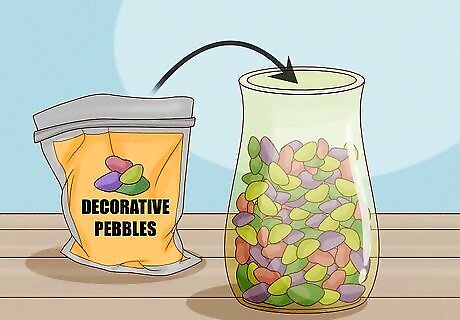
Try the alternative stone-filled vase method. You can try filling a receptacle, like a tall vase, with a few handfuls of decorative pebbles or glass beads. Then fill with the vase water. The bulb should sit on top of the stones but still not touch the water. The bulb roots will need a few inches of water to grow down into. If you’re improvising with your own vessel, just remember that the tulip needs to sit above the water but shouldn’t touch it.
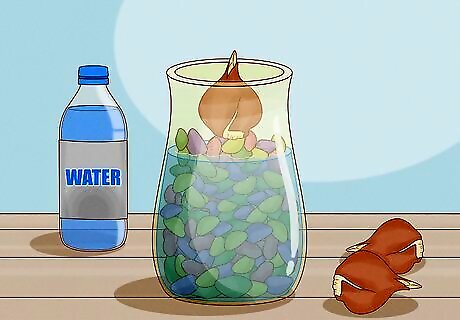
Place your bulb on top without touching the water. Fill your receptacle with a few handfuls of pebbles or glass beads. Top it up with cool water and place the tulip bulb on top. The pointed part of the tulip bulb should point upwards. The base of the bulb should not touch the water, but the water should be just a few millimeters below the bulb. It’s fine to force several bulbs in the same vase, but avoid the bulbs touching in case one rots and spreads the infection to its neighbor. Remember, bulbs may swell during forcing, so give them about an inch of space each.
Caring for Forced Tulips

Place your forcing receptacle into a cool, dimly lit place for a month. The cool and dark space encourages the plant to grow its roots rather than shoots, which is a better use of energy in the first few weeks. 60 F is the optimum temperature. This is a rather cool room temperature, such as you might get in a cellar or garage. This step is optional but highly recommended. After a month, you can bring the tulip and its vessel out into a bright warm room. You should always make sure the water is topped up.
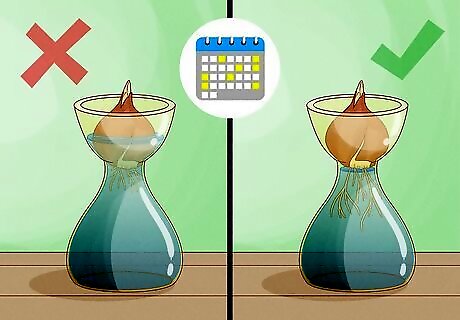
Keep your tulips hydrated. Make sure the water in your vessel is topped up so the roots remain in water, but don’t let the bulb itself soak. Unless you home is very hot and dry, you should check once or twice a week. It’s best to keep forcing tulips out of direct sunlight but they will appreciate a bright room out of direct sunlight.
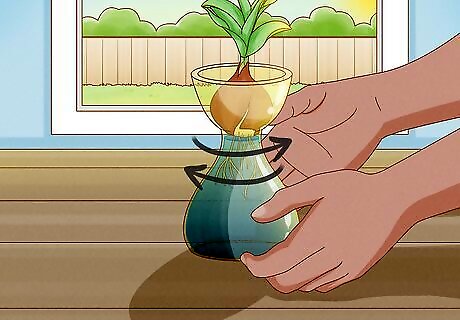
Keep rotating the vase to ensure even sunlight. You are advised to keep rotating the vase. Tulips will grow pointing towards the light, such as from the nearest window. Rotating the vase encourages them to grow straight and even.
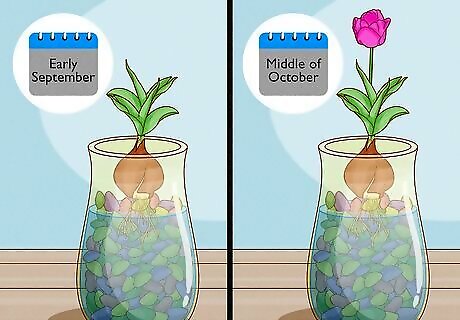
Decide when to force your tulips. Depending on when you want your tulips to be fully flowered, decide when you want to begin the forcing process. If you start forcing tulips in the fall, they will need around 3 or 4 months to come into flower. However, those that started right in the middle of winter, for example in December, won’t need as long to come to flower; possibly only 2 months. If you want tulips in flower over the holidays for indoor displays, you’ll need to get started no later than October. If you are keen to have tulips for a very specific date, it’s usually wise to try forcing them at intervals. Start in early September and start forcing one bulb each week until the middle of October. This will make it more likely that you’ll have flowers by the holiday season.
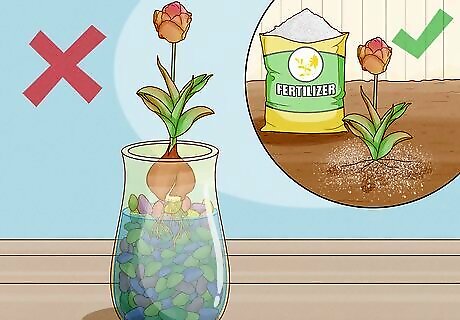
Understand that you can't force tulips multiple times. Unfortunately, forcing a bulb tends to take a toll on the bulb’s reserve of energy. Some kinds of bulbs can recover from forcing and go on to flower again, but tulips are less good at this. It’s fairly unlikely a tulip will flower again once forced, and a tulip bulb won’t stand being forced twice. If you are really reluctant to give up on a bulb once its been forced, you can try planting it in an out of the way corner of the garden with some fertilizer. Possibly it may recover after a few years but you’ll get a better display if you buy new bulbs to replace forced ones. Spent forced bulbs can be composted, unless they show signs of disease. In this case, burn them or dispose of them with household waste.




















Comments
0 comment